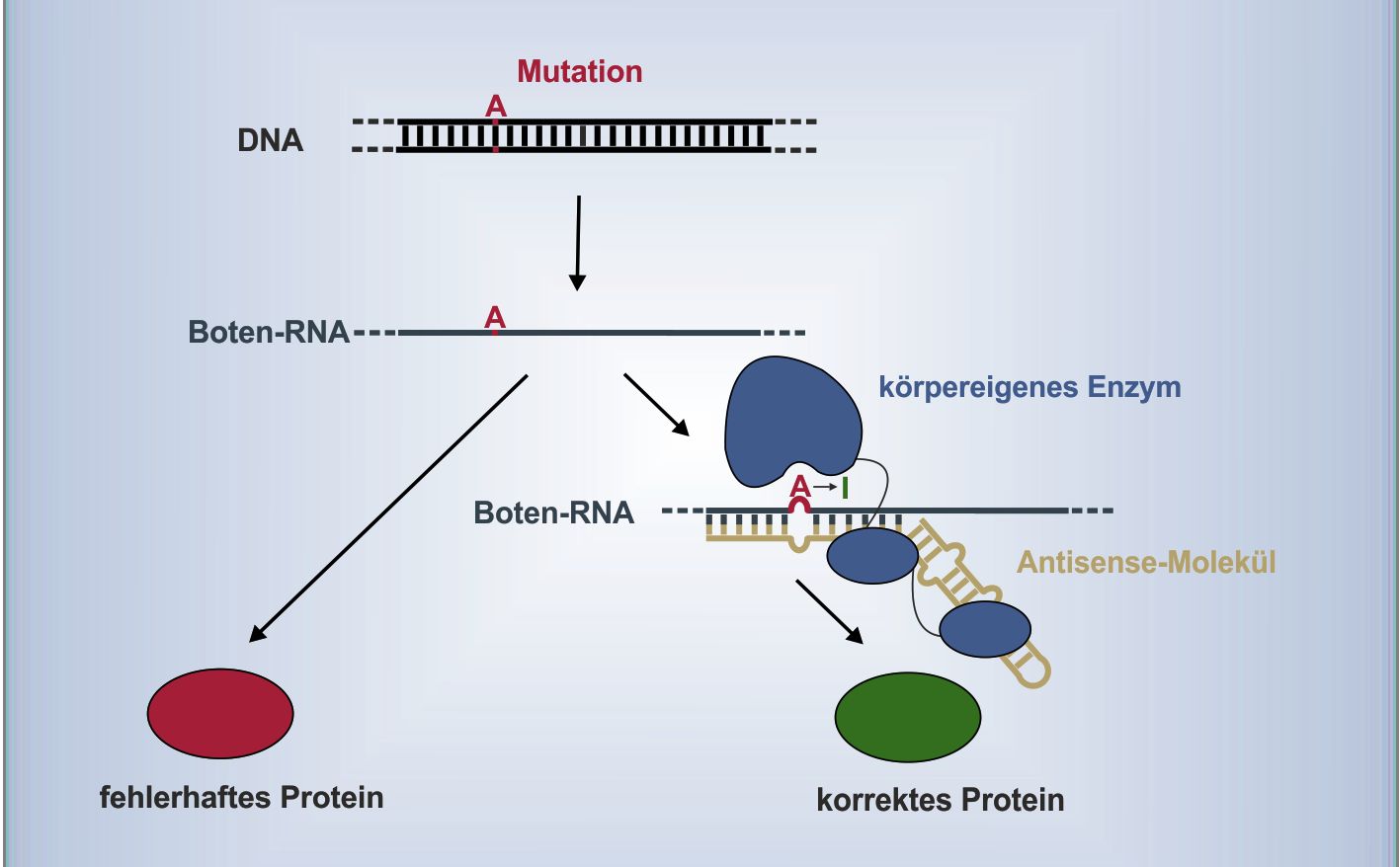Press Releases Archive
28.01.2019
A safer way to correct faulty DNA
University of Tübingen researchers take RNA editing a step closer to treating hereditary diseases
CRISPR/Cas is a method allowing scientists to use genetic “scissors” to cut out and replace part of an organism’s DNA; this leads to permanent alteration of the organism’s genetic makeup and that of its offspring. For this reason, the scientific community has overwhelmingly condemned attempts to use the method on humans. While it offers hope for the treatment of hereditary diseases, if the therapy goes awry, the wrongly-altered DNA will remain in the treated individual and all his or her descendants.
A team headed by Professor Thorsten Stafforst of the Interfaculty Institute of Biochemistry at the University of Tübingen is working on a less risky method of repairing damaged genetic information: RNA editing. This technique uses a “working copy” of the DNA which is soon broken down and dissolved. That means the effects are time limited. The researchers reported in July that they had repaired genetic defects in laboratory cell cultures with high efficiency and precision. Now they have taken a further decisive step in the development of this method for treatment. Instead of using artificial proteins, they have been able to apply it to enzymes from the human body. The study has been published in the latest Nature Biotechnology.
DNA contains building instructions for countless proteins - all encoded as long chains of four different “letters.” If particular proteins are needed in the cell, the relevant section of the DNA chain is copied into a chemically similar RNA molecule known as messenger RNA. This messenger migrates out of the cell nucleus and into the cytoplasm or body of the cell, where the desired protein is constructed according to the instructions encoded in the RNA.
One of the hereditary diseases Stafforst and his team are targeting is antitrypsin deficiency, which can lead to cirrhosis of the liver, liver cancer, or pulmonary emphysema. It is caused by just one wrong “letter” in its part of the DNA chain - and therefore also in the messenger RNA. And that can have serious consequences because the affected proteins do not function properly. The researchers can fix that misplaced letter. “We plant a molecule we have made into the cell. It’s called an antisense molecule, and it fits into a complementary position with the messenger RNA - except for the one faulty spot, which we replace with the correct letter,” says lead author Tobias Merkle, a member of the Stafforst team.
Furthermore, the added molecule has a docking site for a certain enzyme found in the cell, which bonds with the new molecule. The enzyme specializes in recognizing and repairing the paired complex - the antisense molecule and the messenger RNA. “This rectifies the mistake - without making any other change - and subsequently produces the correct protein,” Merkle says.
High efficiency and precision
“It is a great step forward, being able to use one of the body’s own proteins for this process,” Thorsten Stafforst explains. “We previously used an artificial protein in our cell cultures with an added guide RNA. And that worked well in the lab. But it would be difficult to place that construct into the liver cell in the form of medication.” The researchers are continuing their quest to improve the efficiency of genetic error correction. “It may be possible to help people with severe antitrypsin deficiency even by correcting just half of the faulty messenger RNAs,” says Merkle. He adds that the method already has a high level of precision. Even if the added artificial molecule found its way into every body cell, it would only take effect where it found its matching counterpart messenger RNA, Merkle says.
The researchers have observed in several cases that a letter was swapped in places that was not meant to happen. Yet they have not observed any negative effects, according to Stafforst. The University of Tübingen has registered a patent on this method of RNA editing, which could be applied to other heritable disorders. However, the researchers underline that there is still a long way to go until it can be used in treatments for real live people.
Publication:
Tobias Merkle, Sarah Merz, Philipp Reautschnig, Andreas Blaha, Qin Li, Paul Vogel, Jacqueline Wettengel, Jin Billy Li and Thorsten Stafforst: Precise RNA editing by recruiting endogenous ADARs with antisense oligonucleotides. Nature Biotechnology, DOI : 10.1038/s41587-019-0013-6
Contact:
Professor Dr. Thorsten Stafforst
University of Tübingen
Interfaculty Institute of Biochemistry
+49 7071 29-75376
thorsten.stafforstspam prevention@uni-tuebingen
Contact for press:
Eberhard Karls Universität Tübingen
Public Relations Department
Dr. Karl Guido Rijkhoek
Director
Janna Eberhardt
Research Reporter
+49 7071 29-76753
Fax +49 7071 29-5566
janna.eberhardtspam prevention@uni-tuebingen.de
www.uni-tuebingen.de/en/university/news-and-publications.html

